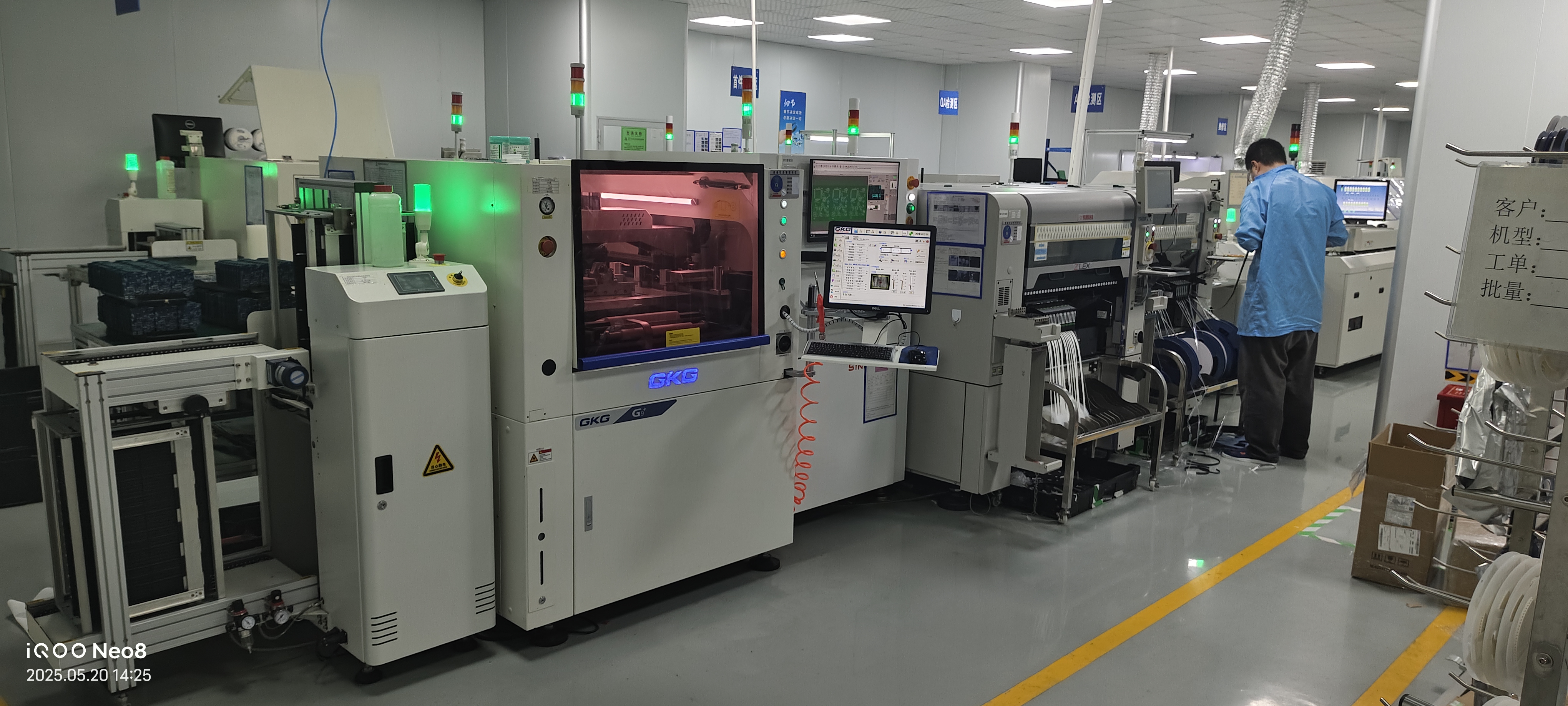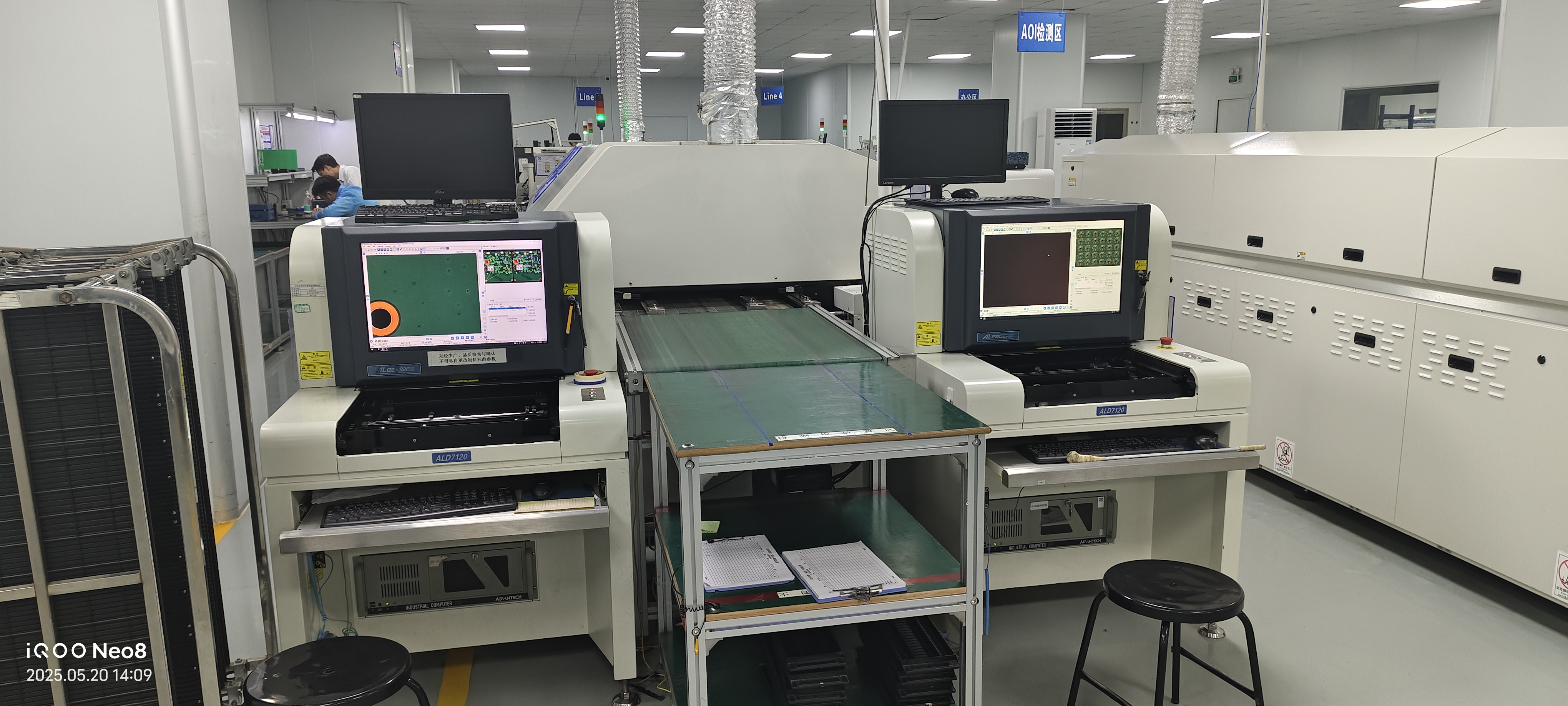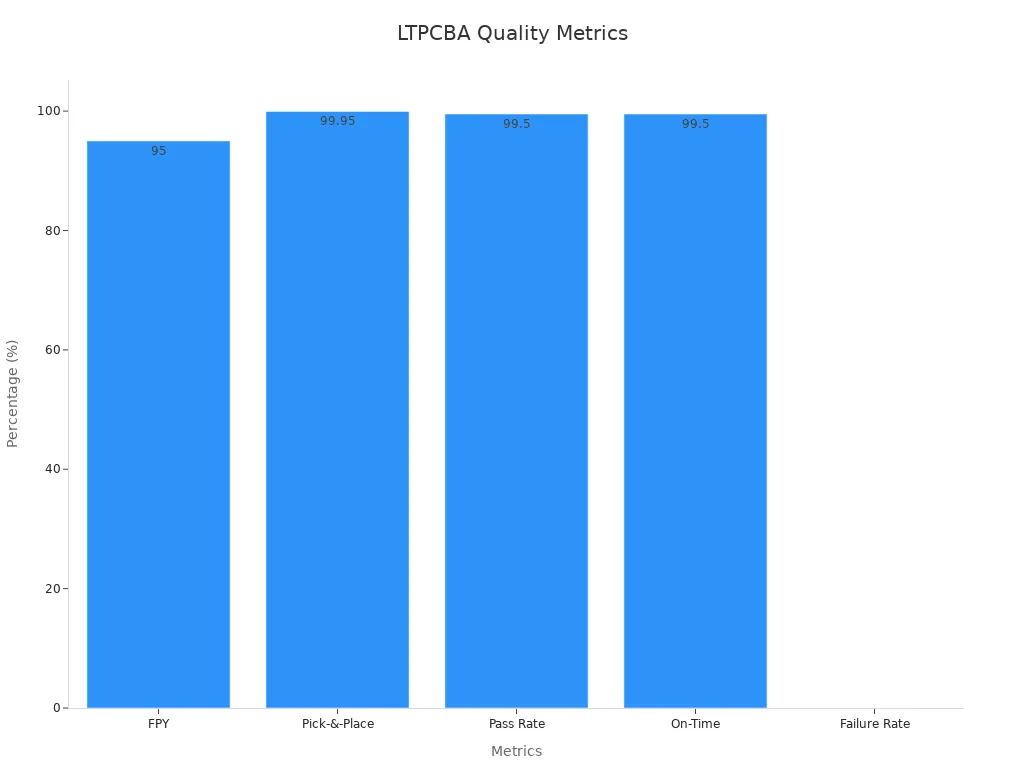How Assembly SMT Production Lines Deliver 99.5% Pass Rates for Critical Applications

Assembly SMT Production lines at LTPCBA reach a 99.5% pass rate. They use very accurate machines, strong automation, and careful quality checks. Real-time monitoring lets workers find and fix problems fast.
Companies with advanced process monitoring work 5% better.
These systems also use less energy and make products better.
Real-time data makes things safer and saves money.
Key Takeaways
LTPCBA uses smart machines to watch for problems all the time. They can find and fix issues fast. This helps them get a 99.5% pass rate. It also helps them make less waste.
Automated inspections like AOI and X-ray look for small defects early. This makes the product better. It also saves time and money on repairs.
Strict quality rules and certifications make sure LTPCBA’s boards work well. They are used in important fields like medical, aerospace, and automotive industries.
Assembly SMT Production Process

Solder Paste Printing
Solder paste printing is the first step in Assembly SMT Production. LTPCBA uses special stencil printers to put solder paste on PCB pads. This step needs careful alignment and the right amount of paste. The printers at LTPCBA check every board as they work. The inspection system measures how tall the solder paste is with great detail. These machines can be set up in less than two hours, even for hard jobs. Changing products takes 15 minutes or less, so the factory can switch fast.
Performance Metric | Value/Description |
|---|---|
Inspection Coverage | |
Measurement Resolution | 12-bit height data |
Process Capability (CPk) | ≥ 1.67 |
Product Changeover Time | ≤ 15 minutes |
Payback Period for Inspection |
Good solder paste printing stops problems early. In-line inspection can catch up to 160 bad boards before they go further. This saves time and cuts down on waste. LTPCBA’s new machines pay for themselves quickly and help make more good boards the first time.
Component Placement
Component placement comes after solder paste printing. LTPCBA uses pick-and-place machines to put parts on the soldered pads. These machines are fast and very accurate. They help build complex PCBs and lower mistakes from people.
SMT assembly has fewer than 100 defects for every million parts.
Pick-and-place machines are much faster than doing it by hand.
Car electronics makers saw 40% faster production and 25% fewer part failures after using SMT.
SMT Assembly Characteristics | Through-Hole Technology Characteristics | |
|---|---|---|
Component Mounting | Components placed directly on PCB surface with high precision | Components inserted through holes, less precise placement |
Manufacturing Speed | High-speed automated pick-and-place machines | Slower manual placement |
Component Density | Supports high-density, multi-layer PCB designs | Lower density due to larger components and hole requirements |
Production Cost | Lower per-unit cost due to automation and smaller PCB sizes | Higher labor and material costs |
Quality Control | Uses AOI, X-ray inspection for defect detection | More manual inspection, higher defect rates |
LTPCBA uses real-time monitoring to check if parts are placed right. This makes sure every part is in the correct spot. It helps LTPCBA keep a 99.5% pass rate.
Reflow Soldering
Reflow soldering connects the parts to the PCB. LTPCBA uses ovens that control heat very well. The oven melts the solder paste and makes strong connections. Careful temperature control and good solder paste stop problems like gaps or bridges.
New reflow methods, like vacuum reflow and nitrogen, lower defects even more. Studies show these ways make solder joints last longer. For example, tests on lead-free solder show better alloys and controls help joints last and fail less.
Modern reflow soldering at LTPCBA keeps things steady and safe, so every assembly is strong and reliable.
In-Line Inspection
In-line inspection checks quality in Assembly SMT Production. LTPCBA uses AOI and X-ray systems to look for problems after soldering. These machines scan each board quickly and find things like missing parts or solder bridges.
Real-time monitoring helps find and fix problems right away. AOI can lower missed defects by 85% and raise first-pass yield from 92% to 98%. In busy lines, this can cut rework costs by 60%. New systems with deep learning find over 97% of problems and work very fast.
Finding problems early keeps bad boards from moving on. This saves materials and helps LTPCBA make high-quality products.
Good results in Assembly SMT Production depend on strong in-line inspection and real-time checks, so only the best boards move forward.
Quality Assurance at LTPCBA

Automated Optical Inspection
LTPCBA uses Automated Optical Inspection to keep quality high. AOI systems use 3D measurement and artificial intelligence to check each board. They find missing, turned, or out-of-place parts before reflow soldering. Finding problems early stops expensive fixes and waste. AOI also checks the height and amount of solder joints. This helps lower mistakes and makes more good boards.
AOI can find very tiny defects.
It checks hundreds of boards every hour.
AI-powered AOI finds up to 99% of faults.
Inline AOI lets workers fix problems right away.
AOI collects data and sends it to Industry 4.0 systems. This helps with real-time checks, remote watching, and planning repairs. Companies using AOI have raised first-pass yield from about 80% to over 98%. This means they make twice as many good boards without hiring more people. LTPCBA’s AOI and X-ray systems make sure only the best boards move forward. This helps reach a 99.5% pass rate.
Data-Driven Adjustments
LTPCBA uses data to make better products and fewer mistakes. They collect information from every step, like solder paste printing, pick-and-place, and reflow soldering. Statistical Process Control and machine studies help guess and lower defect rates. When the system finds a problem, engineers change the process to fix it.
Studies show half of soldering problems start during solder paste printing. Checking early lets workers fix things fast. This raises first-pass yields and lowers repair costs. Machine learning and deep learning help find more defects and lower false alarms. Data analytics help plan repairs and keep machines working well.
Metric/Process Aspect | Description/Value | Impact on Quality and Reliability |
|---|---|---|
First Pass Yield (FPY) | Less rework and faster delivery | |
Pick-and-Place Accuracy | 99.95% | Puts parts in the right spot, fewer mistakes |
AOI and ICT Testing | At every step | Finds problems early |
Inspection Time | Faster with automation | Speeds up quality checks |
Solder Paste Application | Controlled thickness | Needed for most good solder joints |
Reflow Soldering | Exact temperature | Makes strong solder joints |
Final Testing (Functional, Electrical, Durability) | Many tests | Checks boards work before shipping |
Statistical Process Control | Uses data | Keeps quality steady and helps improve |
Using data helps LTPCBA keep making good products, even when the Assembly SMT Production lines are complex.

Certifications and Standards
LTPCBA has many international certifications that show it cares about quality and safety. These include ISO, IATF, and UL certifications. The company follows strict rules to make sure every board meets customer and industry needs.
ISO, IATF, and UL certifications prove the products are safe and high quality.
Advanced checks include AOI, X-ray, ICT, and functional testing.
Solder paste inspection and burn-in testing make boards more reliable.
LTPCBA uses Acceptable Quality Levels and Defective Parts Per Million to track and limit problems.
Statistical Quality Control and regular checks keep everything up to standard.
Metric | LTPCBA's Performance | Industry Benchmark |
|---|---|---|
On-Time Delivery Rate | 99.5% | >98% |
Failure Rate (Functional Testing) | 0.0003% | 0.03% |
These certifications and checks help LTPCBA make safe, high-quality boards for important uses.
Case Studies in Critical Applications
LTPCBA’s quality checks help in tough industries like cars, planes, and medical devices. In cars, LTPCBA’s through-hole DIP PCBA is used in electric car batteries and power inverters. These products handle lots of power and heat, showing they are strong. Aerospace customers use LTPCBA boards in radar, avionics, and missile controls. These boards survive shocks, shaking, and very hot or cold weather.
Medical equipment, like monitors and imaging machines, need LTPCBA’s boards for strong and steady connections. The company uses strict checks like AQL, DPPM, SQC, ICT, FCT, and burn-in testing to make sure products work well. Following ISO9001, ISO13485, IPC, UL, SGS, and RoHS rules helps LTPCBA do a good job.
LTPCBA’s 99.5% pass rate means customers in important fields can trust their products to work when needed most.
LTPCBA gets a 99.5% pass rate by using smart machines, careful checks, and strong quality rules. The team always looks for new ways to make their work better. Companies that need trusted help for important jobs can count on LTPCBA’s skill and focus on quality.
FAQ
What makes LTPCBA’s SMT production lines reliable?
LTPCBA uses smart machines and watches the process in real time. The team checks each board carefully. These steps help make sure the boards are good for important jobs.
Tip: Automated checks find most problems before boards are shipped.
How does LTPCBA ensure product quality for medical and aerospace industries?
LTPCBA follows ISO, IATF, and UL rules. The team uses AOI, X-ray, and other tests to meet tough industry needs.
Industry | Key Standard | Main Test Used |
|---|---|---|
Medical | ISO13485 | Functional Test |
Aerospace | AS9100 | X-ray Inspection |
Can LTPCBA handle urgent or custom PCB assembly orders?
Yes. LTPCBA gives fast answers, quick price quotes, and 24-hour help. The team can handle both urgent and special orders well.
See Also
Effective SMT Assembly Techniques For Superior Electronic Production
Essential Criteria For Selecting A Reliable SMT Assembly Supplier
Common SMT Assembly Techniques And Their Process Workflows
Fast SMT Assembly Solutions That Maintain Quality Under Pressure
Guidelines To Fulfill SMT Assembly Standards For Automotive Parts
